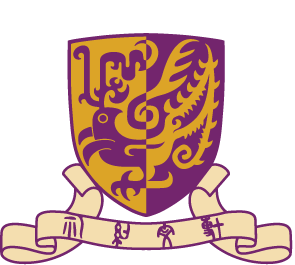
 | 67th Congregation (2009)Professor Roger Y. TSIENDoctor of Science |
One of the great advances in biological science in recent years has been the capacity of scientists to track many kinds of biochemical processes in living cells and in real time. Using a light microscope, they can observe when certain genes are activated or certain proteins expressed. Watching such molecular interactions inside cells enables the study of the birth and spread of cancer cells, for example, or the way in which the electrical pathways inside the brain interact. When some of us on this stage began studying science we did not dream that the observation of such processes was possible. But in the 1960s a jellyfish was found that glowed brightly in the dark, and scientists later began to extract the molecule that made that possible. It was called green fluorescent protein (or GFP), which was made into a robust tool to tag the processes I have just been talking about. The scientist who has done most to develop, refine and expand this powerful research technology is the man we are honoured to have standing before us this morning. He is Professor Roger Y Tsien, who in 2008 was awarded the Nobel Prize in Chemistry for his pioneering research and development work on GFP.
Professor Tsien was born in New York of Chinese parents. He studied at Harvard College and did his PhD at the University of Cambridge. Here he began working on dyes to track the generation of calcium within cells during neurotransmission. He gradually refined his dyes to give them greater selectivity and found a technique for introducing them into living cells without injection. After a post-doctoral fellowship at Cambridge, he searched for a position in the US and found one at the University of California at Berkeley. He describes in his Nobel autobiography the situation at Berkeley in 1981 when he took up his Assistant Professorship. The State of California was cutting funds to its university system, and Berkeley was in the midst of a financial crisis. Despite the slim budget for laboratory start-up, he managed to do some of his most important research and to publish some of his most seminal papers. However, for his work to flourish he needed a more favourable funding regime. He also needed a more flexible appointment in order to support his then unusual combination of work in chemistry and biology. He found these at the University of California at San Diego, where he received support from the Howard Hughes Medical Institute. He moved there in 1989 and has worked there ever since. It was here that much of his Nobel Prize winning work was done.
Professor Tsien was fortunate to grow up in a family that encouraged his scientific interests. His parents bought him a chemistry set, and when he outgrew this his father, an engineer, supported his passion by giving him more hazardous chemicals. His parents also allowed him to perform his experiments, some of them potentially quite dangerous, in the basement of the family home. The experiments were often extremely ambitious. There is a photograph in his Nobel autobiography of an improvised set of plastic containers, beakers and flasks designed, by way of an interlinked, multi-staged process, to synthesize an intermediate on the way to aspirin! It didn’t succeed, but some of the stages were completed, and he evidently taught himself a great deal of science in the process. The spirit of scientific inquiry had by then taken hold of his mind and imagination.
At the age of 15 he entered a National Science Foundation-sponsored summer research program at Ohio University. He describes the work he did there with amusing self-disparagement as preparing "a lot of amorphous precipitates of rather ill-defined composition" and measuring their infrared spectra. Later that year he entered the Westinghouse Science Talent Search, a nation-wide science competition. He used his summer school work despite his "dubious data" and eventually won the US$10,000 first prize. "I am still mystified how I won first prize despite the unsoundness of my project," he writes, "and I retain a dislike for scientific competitions". Despite this feeling about such competitions, Professor Tsien’s scientific career was in effect launched.
Following on from this early prize, Professor Tsien has won numerous awards and honours for his outstanding research. These include the Searle Scholar Award (1983), , Young Scientist Award, Passano Foundation (1991), Artois-Baillet-Latour Health Prize (1995), Gairdner Foundation International Award (1995), Election to the US National Academy of Sciences (1998), Heineken Prize for Biochemistry and Biophysics (2002), Wolf Prize in Medicine, Israel (2004), election as Foreign Member of Royal Society of London (2006), and the E.B. Wilson Medal, American Society for Cell Biology (2008).
Professor Tsien is proud of his Chinese heritage. He writes that thirty-four generations ago his remote ancestor, Qian Liu, "established a kingdom around Hangzhou and fostered its growth through many civil engineering projects." More recently his father’s cousin, the late Qian Xuesen was an aeronautical engineer who "became the father of the ballistic missile program of the People’s Republic." Professor Tsien’s father was also a mechanical engineer, who won a scholarship to the US to study at MIT. Professor Tsien’s own skill in engineering the GFP molecule to produce a whole new palette of fluorescent proteins, with all the colours of the rainbow, may have something to do with genetic inheritance from a distant ancestor!
The Chinese University of Hong Kong delights in celebrating the truly remarkable achievements of people of Chinese descent. For this reason it is my privilege, Mr Chancellor, to present to you Professor Roger Y. Tsien, Nobel Laureate in Chemistry, for the award of the degree of Doctor of Science, honoris causa.
This citation is written by Professor David Parker




